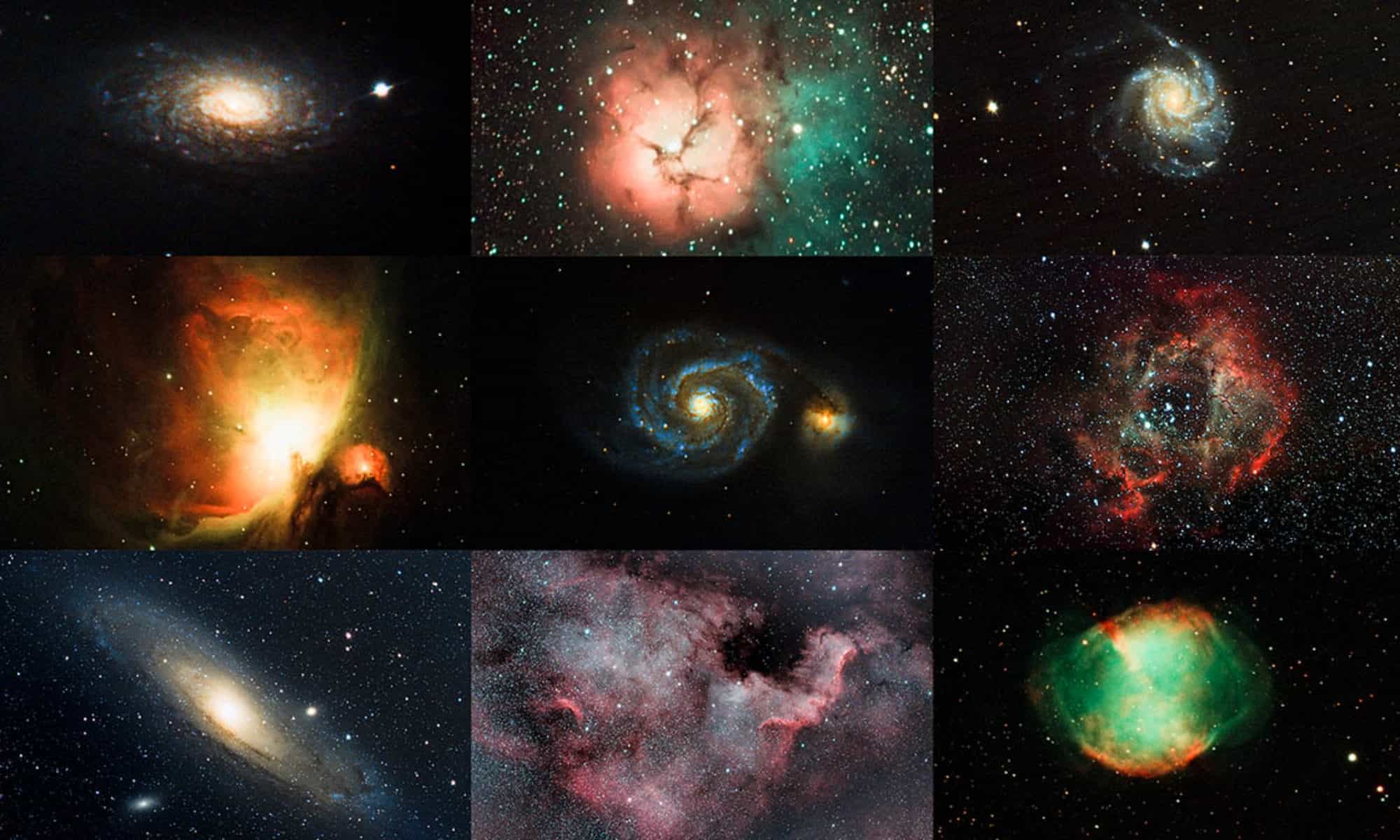Have you ever wondered about the amazing colors in pictures of nebulae? The reds and greens in the Dumbbell nebula are amazing! The best part is these are the real colors I see in the telescope – they aren’t photoshopped. Today, I’m going to explore why nebulae have such fantastic colors. There are several types of nebulae, but this blog is only about emission and planetary nebulae. Those are the nebulae that are spectacular shades of red and green.
First, you need to know what nebulae are. They’re clouds of gas and dust floating in the space between stars – the interstellar space. The gas and dust is called interstellar medium (ISM). Some nebulae form because gravity causes the gases and dust in the ISM to clump together. Others form by supernova explosions. The dust and gas thrown out by the explosion become the clouds we can see. Still other nebulae are formed from the material given off by red dwarf stars. Most of the gas in nebula is hydrogen, but there are small amounts of other gases, including oxygen, nitrogen, helium and sulfur.
So, we have these clouds of gases and dust, but why can we see them? After all, our atmosphere has a lot of oxygen, nitrogen and hydrogen, but we don’t see bright clouds of red and green in our sky. It turns out that when these gases are energized, they absorb the energy and turn into a form of the gases called ions. These ionized gases give off the energy they’ve absorbed in the form of light. Hydrogen gives off a red light, and oxygen emits a greenish-blue light. Those two gases account for most of the color we see in nebulae.
Now, we’re going to get a bit technical. When you look at a rainbow, you see all the colors of the spectrum; from red through orange, yellow, green, all the way to blue. Light can be described as a wave, and each color of light has a specific wavelength. The wavelengths of light are measured in nanometers (nm). Red light is about 400 nm, and blue light is on the other end of the spectrum at around 800 nm. But there are other colors we can’t see. For example, infrared light has a wavelength that’s too small for the human eye to see, and ultraviolet has a wavelength that’s too long for us to see. It turns out that both ionized hydrogen and oxygen give off light that the human eye can see. Hydrogen gives off light at both 486 nm and 656 nm and oxygen gives off light at 501 nm. Those are the colors of light you can see in my nebula images.
But I have a problem in making these wonderful images. I live in Sierra Vista, AZ. It’s a small town, so the light pollution isn’t too bad, but it’s nowhere near as dark as out on a mountaintop or in the middle of the desert. Also, on nights when there is a lot of moonlight, the sky can be so bright that you can’t see many stars at all. So how is it that I get images of these colorful nebulae when there’s all this light in the sky? I use a filter from Optolong, called the L-eNhance filter. This filter only lets light around 500 nm and about 660 nm through, while it blocks all the other light. That means that the red and green light from the nebula gets through to the camera, while the light from the Moon and nearby streetlamps is blocked!
The Dumbbell Nebula is a tight cloud with lots of oxygen and hydrogen gas. That’s why it’s such a spectacular display in green and red.
Alan Biel – Thanks for joining me as I ponder the hidden wonders of the deep-sky. Until next time!
©2019
Hidden Skies
https://hiddenskies.com


